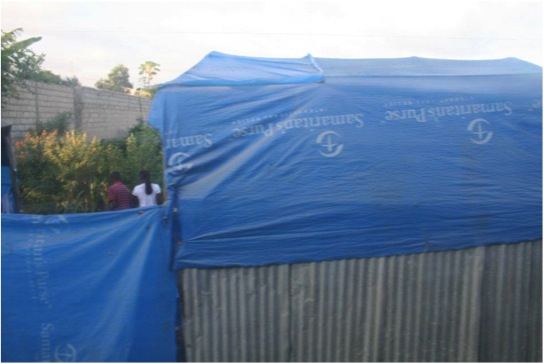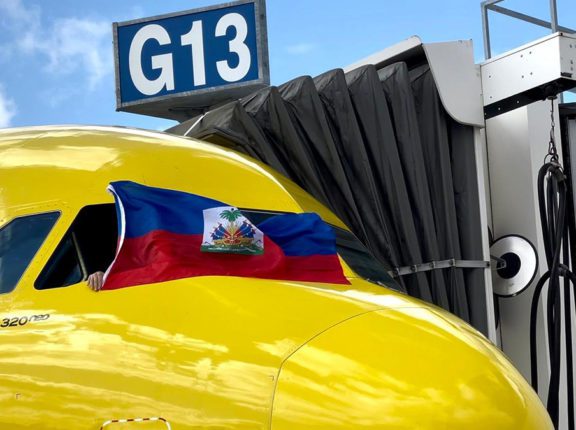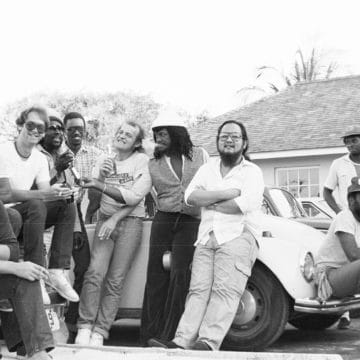Above: a home in Leogane
By Ilio Durandis
Even before the disastrous earthquake that rocked Haiti on Jan. 12, 2010, the country suffered immensely from the symptoms of its Aid Industrial Complex (AIC). The term Republic of NGOs (Non-Governmental Organizations) was synonymous with the country because of the vast number of NGOs doing business there, given its total population and territory size. It has been said that Haiti had more than 10,000 NGOs for its 10 million residents, of which less than 10 percent are legally registered with the Haitian government.
Less than two months from now, a tsunami of international media and personnel will embark to Haiti to get a glimpse of what has been done since the earthquake, and where Haiti stands in regard to its own reconstruction. There will be many reports about what has happened to the aid money, or more questions about where it has gone, all in the hope to get a sense of where the country is really going.
Since many people have been asking where the aid money is, or, better yet, questioning the lack of spending by some of the biggest NGOs or foundations that received large sum of donations in the name of Haiti, this report will try to elucidate the landscape of aid in Haiti and highlight what some of the major players have been doing since that tragic day almost two years ago.
For starters, a basic Google search of “where is the aid money for Haiti” would give plenty of results that anyone could deduce that most of the money has either not yet spent or has not been efficiently used to rebuild the country.
According to a National Public Radio (NPR) report in January, the American Red Cross, World Vision, Catholic Relief Services, Oxfam America, Partners in Health, Clinton Bush Haiti Fund, Save the Children, William J Clinton Foundation were all among the top receivers of donation money to respond to Haiti’s earthquake.
Almost two years later, many of these organizations and foundations have not been able to efficiently disburse the funds they raised for Haiti’s relief and recovery post-earthquake.
The American Red Cross (ARC), in their June update, published that out of the $484 million dollars raised, they have been able to spend just $295 million dollars on the relief and recovery effort thus far. Most of that money has been spent on temporary housing, food, water, sanitation, and health. The ARC has been working in partnership and sometimes as donors to other large NGOs, such as Habitat for Humanity.
Oxfam America, which focused its efforts on shelter, water sanitation, foods and livelihoods, raised an estimated $98 million, of which 20 percent still remained unspent. More recently, six staff members of the organizations were fired over alleged abuse of power and bullying. Oxfam made it clear these members were not involved in any money corruption scheme, and that all money received for earthquake relief and recovery would continue to be used for the reconstruction of the country.
Other major organizations, such as World Vision, Catholic Relief Services, and Save the Children fared no better at the pace they have decided to spend donors’ money in Haiti.
All these organizations, including the Clinton and Clinton Bush organizations raised more than $1 billion between them in the immediate aftermath of the quake, and as of this writing many of them have scaled down their involvement significantly in Haiti, as they keep promising that every dime will be spent in the country.
The issue at hand is not so much about how these organizations failed to disburse their donated fund in a timely manner and adequately, but, more importantly, it is how they have decided to spend the money.
For the most part, the Clinton Foundation served as a grant-giver to many of those mega-NGOs, which already received tens of millions of dollars post-earthquake – a sum they could not seem to find ways to spend fast enough in a country that is in need of almost every basic necessity.
The Clinton Bush Haiti Fund has revealed about $32 million committed to organizations working in Haiti (having raised $54 million) where less than $5 million is committed to Haitian-led organizations; organizations like Concern, Habitat for Humanity, Catholic Relief Services, and Partners in Health are among the fund recipients.
The aid industrial complex (AIC) in Haiti is essentially applying the marginal utility theory when it comes to how NGOs think of themselves vis-a-vis their dealings with Haitian-led organizations and the people.
The theory states that the marginal utility of a good or service is the utility gained or lost from an increase or decrease in the consumption of that good or service. The NGOs which comprised the AIC understand the marginal utility of their services because they believe that, without them, life could become a lot harder for many more Haitians.
Thus when it comes to aid and grants, these organizations form a tight group and keep out of most Haitian-led organizations within their circle. The more they apply this theory, the more valuable their services become to the Haitian people, and the more the latter would demand their services.
William Stanley Jevons, the political economist, once put it that value depends entirely on utility.
What becomes very obvious in my research is that the way the AIC works is almost counterproductive to progress in Haiti.
We have a system where mega-NGOs, such as the ARC, Oxfam and CRS — to name just a few — usually dominate the lion’s share of the donations, and thus can explicitly decide what projects they will or not support.
Working alongside the mega-NGOs are foundations like the Clinton Bush Haiti Fund and major international organizations such as the Inter-American Development Bank (IDB), which usually support the mega-NGOs work by funding them.
Another interesting observation is that mega-NGOs often collaborate among themselves by providing funds or in-kind services to each other. It is interesting because this setup clearly limits the need to go outside the AIC for help or services, and thus every major decision is kept within a limited core organizations and institutions, which more often than not deprive the voice of the Haitian people.
What can be seen in Haiti as it tries to rebuild are those projects that the AIC deems valuable and important. The NGOs and those world organizations move at their own pace and do as they please because they control everything — the relief effort lasted however long they wanted it to last until they moved to a transitional phase, where they were providing people with transition shelters and cash for work.
The transitional shelters that organizations like Samaritan’s Purse built in Leogane were often made with plywood. In some instances, parts of them would be covered with the famous blue tarps or plastics with name of Samaritan’s Purse on them.
They were a step up from the tents, but many in Haiti question their usefulness and durability. The cash for work mostly consisted of hiring people to clean the streets, dig in dirty and muddy water to clear canals or clean some of the latrines in the tent cities.
One morning in January, just before the first anniversary of the earthquake, I met a woman on Champs-de-Mars, where many internally displaced people have erected their tents. She was sweeping the street in front of the National Palace, as part of a Cash for Work project. I asked her where she lives and how much she was getting paid to do the job. She answered that she resided in Cite Soleil, and that she had to be on a Tap-Tap by 5 AM every morning, in order to make it on site on time. She said that the money she was getting paid was barely enough to cover her transportation expenses. S
The woman said that she had no choice but to do this job, because it was still better than nothing. She told me that there used to be issues with the programme not paying on time, or that people in charge were giving preferences to individuals they knew.
As some of the NGOs were getting ready to move from the transitional phase to a more permanent recovery, a cholera outbreak broke out. Immediately, many NGOs shifted their attention to attend to this new emergency.
Cholera, a disease which was not present previously in Haiti, caused more than 6,000 deaths, and left hundreds of thousands hospitalized. A lot of money that was supposed to go towards reconstruction, by default went into the response to the cholera outbreak.
The American Red Cross was one of the leaders in responding to the outbreak. They set up and operated many Cholera Treatment Center throughout Port-au-Prince and provided financial support to other health organizations outside of the capital city.
The massive and swift response to the cholera outbreak serves as a great example as to the importance of NGOs in a country like Haiti, but it also helped to highlight that in order to get the maximum out of these organizations, their goals must be well-defined and resources must be shared to increase efficiency.
The bottom line is that having NGOs in Haiti is not the problem, but finding ways to coordinate their efforts and to regulate them is a much more precarious proposition. There are some NGOs that have been and are continuing to do great work in and around the country — organizations like Partners in Health, Medecins Sans Frontieres, among others.
Those NGOs working in healthcare with a specific mission and clear goal tend to do much better with aid money and efficiency of their work, when compared to those that try to do it all.
Another default side-effect of the AIC is the weakening of the Haitian government. Since the AIC controls so much capital and can afford to attract some of the country’s best mind with more attractive pay; it left the government, for the most part, with an already limited pool of bright and capable minds to serve the best interest of the republic. The AIC economic influence also undermines the government priorities, for they mostly engage in projects that can serve their donors’ base, and as a result many members of the AIC tend to the same projects, and sometimes in the same town. This is an inefficient model.
Because of past corruption issues, the Haitian government was bypassed by donors after the earthquake, which eventually reconfirmed the weakness and incapacity of the state. With a lack of economic capital, the government could not do much to respond to the immediate needs of its people, and thus a new commission was created called the Interim Haiti Recovery Commission (IHRC) with former President Bill Clinton and then-Prime Minister Jean-Max Bellerive as its two co-chairmen.
Even this commission could not account for what it was mandated to do — approving projects that should be receiving funding from major donors.
Accountability is seldom demanded of the NGOs. Visiting their websites, the list of projects that they are doing are front and center, but very few NGOs can highlight the outcomes of their projects. Once an organization mentions it is doing a certain project, or that it has given a certain amount of money towards a project, that is usually the end of the story; there are often no real ways to track the outcome.
A call to one of those organizations, one of the top ten receivers of aid money for Haiti after the earthquake asking for a simple update on how much they have spent thus far in Haiti could not be answered.
There is no secret about the lifestyle that many NGOs’ expatriate workers are living in Haiti. They get paid four to six times more than their Haitian counterparts, and often they get allowances for things such as housing, food, transportation and so forth. According to The Chronicle of Philanthropy, Oxfam has spent 10 million dollars on hiring and paying staff in Haiti during the first year responding to the earthquake. Altogether, they spent almost $29 million in staff payments, logistics, transportation, vehicles, office spaces, and to manage, evaluate and run programs in Haiti. That’s $29 million of the $69 million they have spent as of January of this year.
The blueprint moving forward should not be trusted in the hands of the AIC to do what is best for Haiti, but rather for the big international organizations to find ways to include more Haitian-led community based organizations like Sonje Ayiti, Asosyasyon Peyizan Fondwa (APF), KOFAVIV and many more like them. This is one of many ways to make sure that Haitians get what they want, because leaders of those organizations are integral parts of the communities they serve.
Lastly, the Haitian government must enforce its NGO policies. If not already in place, it must limit the number of NGOS that can be providing the same services within a reasonable distance or communal section.
There is a lot to do in the reconstruction and revitalization of Haiti. Resources cannot continue to be used inadequately and donors need to demand more accountability, transparency and results from the NGOs.
Ilio Durandis, a Caribbean Journal contributor, is the founder of Haiti 2015, a social movement for a just and prosperous Haiti. He is a columnist with The Haitian Times. This report was done thanks to donors from spot.us.







